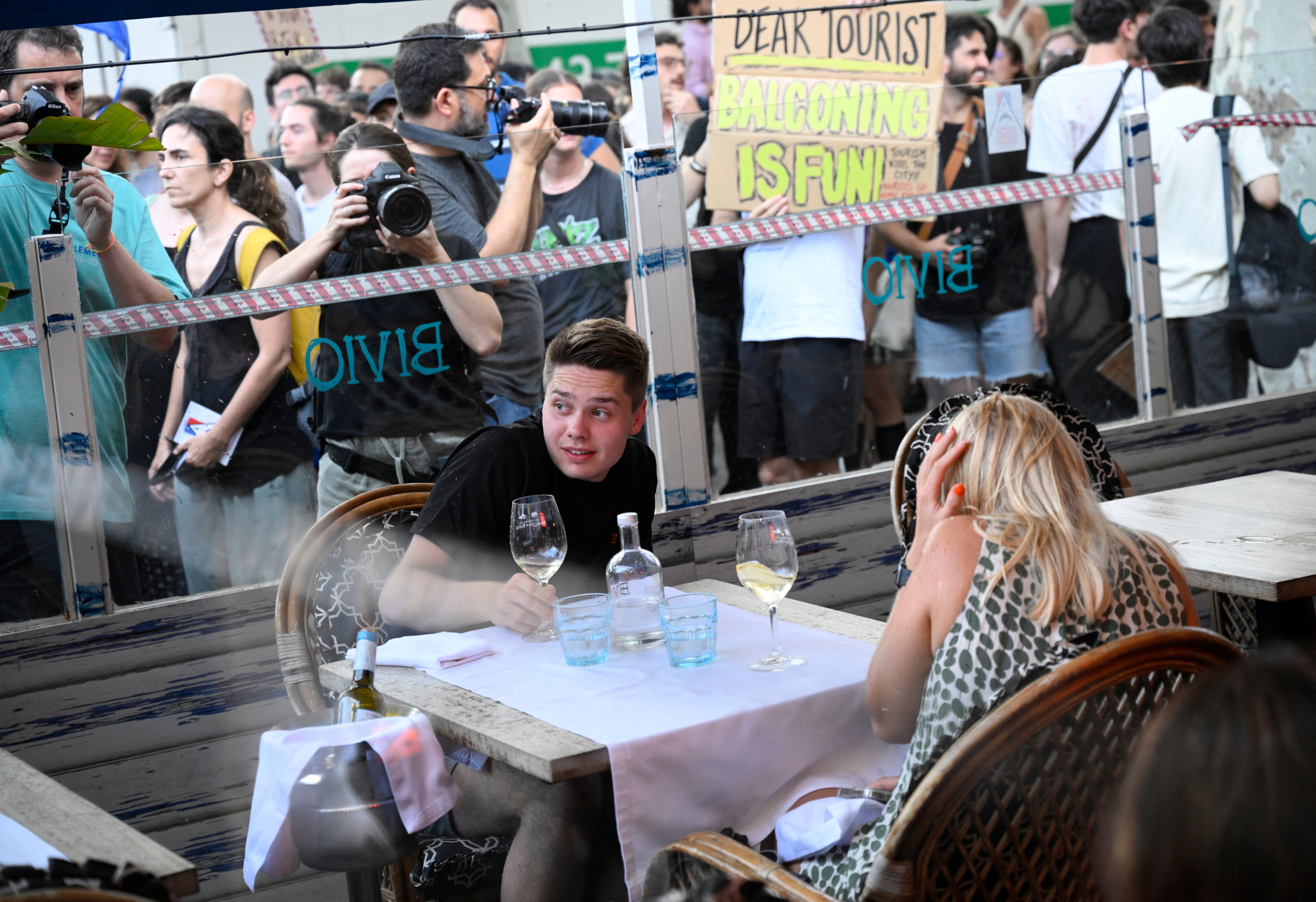Water pistols won’t keep tourists at bay – but this just might…
Residents of Barcelona have tried everything to deter visitors – including soaking them as they eat out – but with little obvious success. Paul Clements has a nuclear option that might just work


Now the water pistols are out for foreign visitors in Barcelona. Last weekend, al-fresco diners had to abandon their arròs negre (that’s squid ink paella to you) when they were squirted by locals marching against overtourism.
Water pistols? It’s hardly all-out street warfare – but Barcelonans have tried everything else. Noisy demos through tourist areas. Visitor tax hikes. A city-wide ban on Airbnb. Denying permission for new hotels. Limiting cruise ships. Graffiti everywhere demanding tourists go home (but mostly in Catalan, so does the message really hit home?).
The city has been doing its best to discourage overtourism ever since it emerged from the Franco dictatorship and was transformed by the 1992 Olympics… and promptly overwhelmed. A city of 1.6 million residents now receives more than 30 million visitors a year – and growing.
I first got a taste of Barcelona’s twitchy anti-tourism movement 20 years ago, while on one of its open-top tour buses. I was taking my nan to Parc Güell, Gaudi’s vast, forested wonderland on a ridge overlooking the city that’s full of mind-bending, mosaic-tiled design touches inspired by nature: a giant, snaking bench, a colonnade shaped to look like tree trunks, a grand flight of steps in the form of a salamander….
As our bus slowed to turn a steep corner on its way up to its gates, we were waterbombed by gleeful residents in a nearby tower block. We got splashed a bit, while a poor Norwegian couple took the full force. The precision with which the water-filled balloon found its target suggested this prank was a routine affair.
Parc Güell has lately become a victim of overtourism itself. Admissions are now strictly limited, to 1,400 visitors per hour. If you’ve not booked well in advance – sometimes weeks, in high season – there’s no guarantee of entry. If that doesn’t put you off, the prospect of joining the queue at the admittedly fabulously ornate park gates, in the baking, unshaded heat from the merciless Mediterranean sun just might. And if you don’t baulk at that, there’s the cost of entry, which was introduced in 2013: what was conceived as a public park now costs €10 each to enter.
But nothing quite takes the edge off the magisterial Gaudí experience that awaits than the angry, anti-tourist graffiti stencilled on residential blocks that line the long, steep walk up to the park from the nearest Metro stations.
For a young and creative city as Barcelona, the slogans are typically a cut above the usual “go home!” daubings: “Your luxury trip – my daily misery.” “Tourists, we spit in your beers… cheers!” “Pickpockets welcome.” Some are even beautifully stencilled, rather than just spray-canned, in attractive block fonts.
But for some, the measures have not gone far enough; some 4.5 million still make the pilgrimage every year.
So the 116 bus route, one of the few to stop outside the park’s main gates, has been removed from tourist maps. The authorities have also convinced the likes of Google and Apple to wipe it from their transport apps.
Residents of the La Salut neighbourhood report that the seemingly outlandish idea, the kind that would normally get instantly dismissed during a town hall brainstorm, has had an immediate impact, with elderly residents able to find seats on buses that were once full of be-backpacked tourists taking up all the space.
It’s a rare instance of a simple measure actually doing some measurable good in tackling “overtourism”. That’s when a place enjoys such popularity, it winds up saturated with visitors, becoming impossible to enjoy either as a tourist or a resident. As well as creating busy hotspots and transport bottlenecks – because when visitors go somewhere, they all tend to go to the same place (*cough* La Rambla *cough*) – basic services can become equally overwhelmed.
If the city is intent on stopping at nothing to limit the admittedly vast numbers of looky-lous clogging up its ancient neighbourhoods, there’s a nuclear button it could push: ban the use of English.
Take down tourist-friendly signs. Ban picture menus in restaurants. Legislate so bar staff speak only in Catalan. When you can waft your smartphone over a menu and it translates before your very eyes, there’s no guarantee it’ll work as a deterrent… but word would soon go round the WhatsApp groups planning hen parties that tourists will not be indulged. Perhaps we should go somewhere else instead?
Barcelona loves a guerilla tactic, and they’re close to realising that Catalan is their greatest weapon. Last summer, official-looking signs appeared along the beachfront, warning of “falling rocks” and “dangerous jellyfish”. The fact they were in English should have been a giveaway: the small print, in Catalan, explained that “the problem isn’t rockfall, it’s mass tourism” – and that the beach is “open, except for foreigners and jellyfish”.
Go Catalan-only, and they could make Barcelona great again.






Join our commenting forum
Join thought-provoking conversations, follow other Independent readers and see their replies
Comments